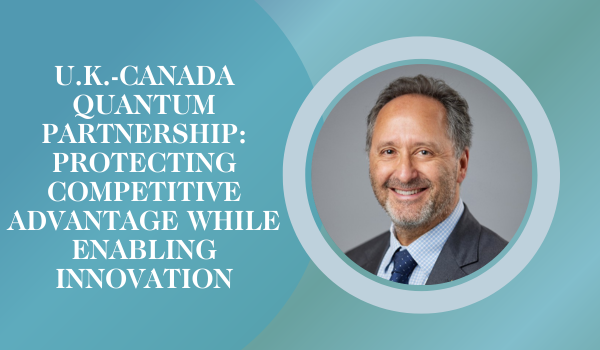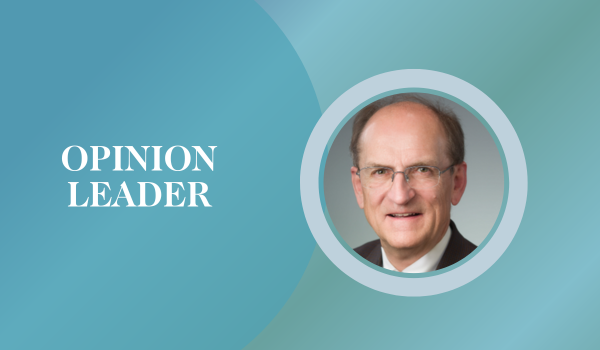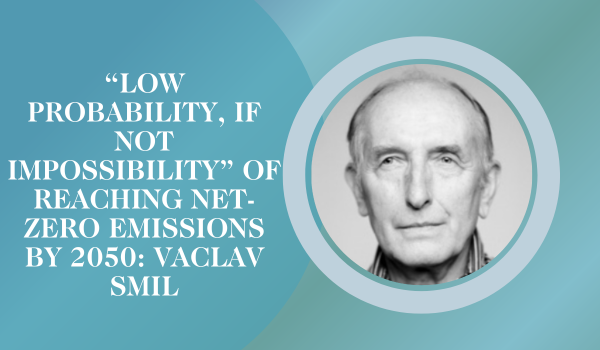Canada Growth Fund investments total $340 million: What’s the value for taxpayers’ money?
 R$ Managing Editor’s Note: The Canada Growth Fund (CGF) is a $15-billion public investment vehicle, at arm’s length from the federal government, aimed at helping private capital to build Canada's clean economy by using investment instruments that absorb certain risks in order to encourage private investment in low-carbon projects, technologies, businesses and supply chains.
R$ Managing Editor’s Note: The Canada Growth Fund (CGF) is a $15-billion public investment vehicle, at arm’s length from the federal government, aimed at helping private capital to build Canada's clean economy by using investment instruments that absorb certain risks in order to encourage private investment in low-carbon projects, technologies, businesses and supply chains.
In late March, CGF made its third investment, putting $50 million into Montreal-based Idealist Capital. This impact fund concentrates on commercial-scale technology developers focused on the shift to a low-carbon economy – a top priority for the Trudeau government.
Prior to CGF’s investment, Idealist Capital had so far invested in four companies: Montreal-based dcbel, a bi-directional (the ability to transfer energy both to and from a source) electric vehicle charging company; Saint-Hubert, QC-based XNRGY Climate Systems, which develops high-efficiency commercial HVAC units; Montreal-based SPARK Microsystems, which makes low-power semi-conductors for wireless communications; and Montreal-based Sollum Technologies, which specializes in smart LED lighting for greenhouses.
Last October, CGF’s first investment plowed $90 million into Eavor Technologies, a Calgary-based geothermal energy developer building its first commercial-scale facility in Germany. In December, CGF invested $200 million in Entropy Inc., a unit of Calgary-based Advantage Energy Inc., that develops carbon capture and storage projects and has an operating commercial CCS project at a natural gas processing plant in northwestern Alberta. This investment included debt financing coupled with a fixed-price carbon credit purchase agreement, through an approach known as contracts for difference, for Entropy. The contract essentially guarantees the company a future price for selling carbon credits.
These are all sizeable investments with public money. Research Money wanted to know what criteria CGF used in selecting the companies for support, what CGF’s due diligence process is, and whether taxpayers are receiving value for their money and a good return on their investment. We asked several questions of CGF, which is being managed by  the Public Sector Pension Investment Board. Patrick Charbonneau, president and CEO of Canada Growth Fund Investment Management Inc. (photo at right), a subsidiary of PSP Investments, responded by email to our questions.
the Public Sector Pension Investment Board. Patrick Charbonneau, president and CEO of Canada Growth Fund Investment Management Inc. (photo at right), a subsidiary of PSP Investments, responded by email to our questions.
R$: Apart from the general description of the “Investment Selection Criteria” process available on CGF’s website, what specific evaluation framework and technology performance criteria are used to select companies/technologies for CGF funding?
Patrick Charbonneau: CGFIM (Canada Growth Fund Investment Management) has designed an investment process which includes bespoke and public deal sourcing, investment screening, due diligence and investment recommendation. This process mirrors many of the best practices developed by PSP Investments over the course of its 25-year history as one of Canada’s largest pension investors.
When evaluating investment opportunities, CGF considers a set of investment criteria that enables rigorous, fair and consistent evaluations, while ensuring that the opportunities pursued align with relevant aspects of the CGF mandate. Any individual investment may not satisfy all investment criteria and strategic objectives of the CGF mandate.
- Impact alignment (consistency with the CGF mandate): whether the potential impact of an investment is aligned with the CGF mandate and one or more of CGF’s objectives.
- Additionality: whether the participation of CGF brings additional investment and impact that would not have happened otherwise.
- Investment soundness: whether an investment has a reasonable expectation of a return of capital, minimizing concessionality.
[Editor’s note: Concessional financing offers more favourable terms compared with commercial financing, and supports projects with high social and environmental impact while also mitigating risks for investors].
R$: How are the investment management teams for the CGF created, who are their members, what sectors are they drawn from, and what is their expertise?
PC.: The CGFIM team is composed of diverse investment professionals and other experts. For example, the CEO of CGFIM, Patrick Charbonneau, has over 20 years of experience in the infrastructure sector and was instrumental in building the organization’s infrastructure portfolio and team since the inception of PSP Investments’ Infrastructure asset class in 2006.
CGFIM leverages PSP Investments’ deep expertise and track record across a broad range of sectors and strategies, its mature and scalable operational ecosystem and a governance framework that is independent and at arm’s length from the Government of Canada. However, CGFIM’s investment team and management activities are operationally distinct from PSP Investments’ pension investment mandate, and the assets of CGF and of PSP Investments are not comingled.
R$: Who makes the final decision on investing in a company – the investment management team or the Public Sector Investment Board’s board of directors or the Minister?
P. C.: All duties and responsibilities in respect of investment evaluations and decisions are delegated by CGFIM to the Impact, Risk & Investment Committee (the “CGFIM IRIC”). The CGFIM IRIC is CGFIM’s main decision body and is responsible for overseeing the delivery of CGFIM’s services in an independent fashion and in accordance with its mandate.
The Minister of Finance and Canada Development Investment Corporation have no authority in respect of CGF investment decisions. Similarly, neither the Board of Directors of PSP Investments nor PSP Investments’ investment committee have any authority in respect of CGF investment decisions.
R$: What assurance can you offer Canadian taxpayers that these sizeable investments are being made using well-informed, rigorous due diligence processes guided by technical/industry experts?
PC: As part of its investment process, CGFIM conducts comprehensive due diligence, in line with the best practices of private market investors. Due diligence is led by the CGFIM team, and key focus areas include, but are not limited to, financials, operations, intellectual property, commercial studies, technical assessments, legal matters, tax matters, human resources, ESG practices and policies, as well as IT and cybersecurity assessments. External advisors are engaged from time to time when deemed appropriate and necessary by the CGFIM team.
In addition, for each investment opportunity, CGFIM conducts an assessment of the opportunity against the CGF investment criteria (acknowledging that individual investments may not always satisfy all of the CGF investment criteria). In doing so, CGFIM also considers the opportunity’s financial returns, risk mitigation and level of concessionality, as well as how the opportunity will fit within CGF’s broader portfolio of investments. For all prospective investments, CGFIM also assesses potential reputational risks as well as any potential conflicts of interest.
R$: Why, in the media releases for each of the CGF’s two investments to date, is there not specific, detailed information about how these investments meet the Investment Selection Criteria of “Financial Soundness” and “Additionality.”
PC.: In calendar year 2024, CGF will be reporting on the performance of its portfolio on an annual basis to Parliament, including with respect to the alignment of CGF’s portfolio with its mandate.
R$: For the criteria of “Financial Soundness,” where is the information about the target of a return of capital on either of these two investments? What return of capital is CGF expecting/forecasting from each of these investments?
PC: As a general rule, as is the case with all commercial investors, CGFIM does not comment on the valuation or return expectations of individual positions within its portfolio. CGF’s return objective is to recover its invested capital on a portfolio basis over a period of 15 years. CGF will be reporting on the performance of its portfolio on an annual basis to Parliament.
R$: For the criteria of “Additionality,” where is the information showing that either of these two projects could not/were not able to secure investments without the participation of GCF? Why couldn’t either of these companies have secured an investment from the Strategic Innovation Fund, for example, which provides comparably sized investments?
PC.: CGF is a concessionary investment fund that is mandated to absorb certain risks that private investors are generally unwilling to take, while achieving preservation of capital on a portfolio basis over the long-term. CGF is uniquely positioned in the Canadian investment landscape to invest via equity, debt and derivative instruments.
In general, CGF seeks to facilitate efficient project structuring and to crowd-in a larger pool of investors to decarbonization activities in Canada. CGF is helping to structure projects and transactions directly with emitters in a way that lower their costs and increase the accessibility of debt financing for projects.
The Strategic Innovation Fund is a granting agency that does not invest using the instruments available to CGF. CGF is not able to comment more broadly with respect to SIF’s strategy.
Regarding the Eavor transaction: CGF is seeking to bridge the liquidity gap observed in the Canadian clean technology market, offering support to companies at the critical stage of commercialization and scale-up. CGF’s inaugural investment [of $90 million] in Eavor Inc. served as a testament to this dedication, underlining its commitment to catalyzing growth and innovation within the Canadian clean technology sector.
Regarding the Entropy transaction: CGF agreed to a $200 million investment in Entropy Inc. coupled with a fixed-price carbon credit purchase agreement (“CCO”) of up to one million tonnes per annum. This strategic growth partnership represents an important new investment in Canadian carbon markets. The features of the CCO – notably its large scale and its long-term fixed-price – represent a global first in compliance markets. This financeable structure helps to de-risk and accelerate private CCS investment by establishing carbon price certainty for Canadian projects.
[Editor’s note: CGF, in its media release announcing the investment in Entropy, said CGF has committed to purchase up to 9 million tonnes (up to 600,000 tonnes per year) of TIER or equivalent carbon credits from Entropy projects. TIER is an Alberta carbon credit trading program for large emitters. CGF also noted that the initial allocation of the fixed-price carbon credit purchase agreement will allow Entropy to proceed with its Glacier Phase 2 CCS project, targeting the sale of up to 185,000 tonnes per year of Alberta TIER carbon credits at an initial price of $86.50 per tonne for a term of 15 years. The Glacier CCS project is located at the Advantage Energy Glacier Gas Plant near Grande Prairie, in the central portion of the Peace Country in northwestern Alberta, abutting the border of British Columbia.
CGF said the $200-million investment could eventually result in CGF owning approximately 20 per cent of Entropy.
CGF also noted that Entropy has a $300-million investment agreement with Brookfield, via the Brookfield Global Transition Fund, to scale up the deployment of Entropy’s CCS technology globally. CGF said Brookfield will continue to invest the balance of its existing $300 million hybrid security into Entropy’s business, by which point it would be the largest shareholder and control the company.
According to CGF: “Post-investment, Entropy will have approximately $460 million of capital available which, together with investment tax credits, carbon capture incentives and project financing, establishes a path to execute over $1 billion of CCS projects and abate more than 1 million metric tonnes per annum of emissions, with a focus on the Canadian market.”]
R$: In Eavor’ case, how does a public investment in a company that’s building its first commercial facility in Germany benefit Canadian taxpayers making this investment?
PC.: Yes, Eavor’s first commercial facility is currently under construction in Geretsried, Germany. CGF is proud to support a Canadian company using Albertan expertise to help reduce global greenhouse gas (GHG) emissions.
CGF’s investment took the form of a direct commitment of $90 million of Series B preferred equity in Eavor at the same price and terms as other commercial investors. CGF’s investment will ensure the Company remains Canadian as it begins commercialization, a phase at which many Canadian clean tech companies, often lacking capital for growth, are forced to sell their technology to foreign strategics. CGF’s investment will allow Eavor to scale-up its business while remaining headquartered in Calgary, Alberta, retaining its intellectual property, and creating good-paying jobs in Canada.
As a result of its investment, CGF has secured a seat on Eavor’s board of directors and is pleased to support the ongoing growth and evolution of this Canadian clean technology champion. Eavor has a diverse pipeline of deployment opportunities to pursue following its Geretsreid project, some of which could occur in Canada. We look forward to engaging with Eavor on an ongoing basis to ensure it selects future deployment locations in the best interest of building a great business, while retaining Canadian IP and increasing jobs at its HQ in Calgary.
[Editor’s note: The focus sectors for CGF investment are: carbon capture; hydrogen; clean tech; biofuels; critical minerals; and smart electrons. CGF has more than 80 potential investments in the pipeline – about 20 of which it considers “high priority.”]
R$
Events For Leaders in
Science, Tech, Innovation, and Policy
Discuss and learn from those in the know at our virtual and in-person events.
See Upcoming Events
You have 0 free articles remaining.
Don't miss out - start your free trial today.
Start your FREE trial Already a member? Log in
By using this website, you agree to our use of cookies. We use cookies to provide you with a great experience and to help our website run effectively in accordance with our Privacy Policy and Terms of Service.





